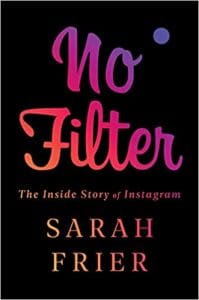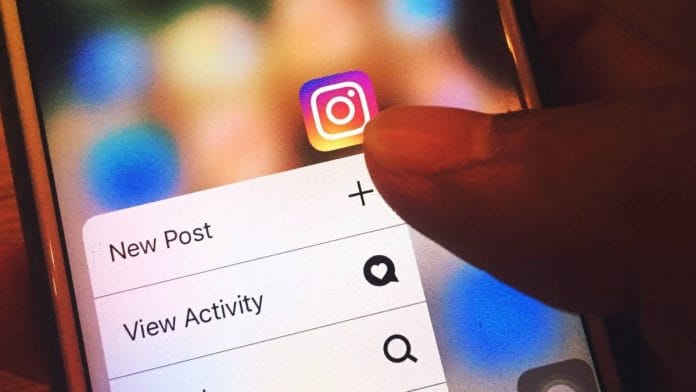Being doubted was a powerful motivator. But ultimately, the Silicon Valley elite weren’t going to determine Instagram’s future—regular people were. Investor Steve Anderson reminded Systrom and Krieger of their strongest asset. “Anybody can build Instagram the app,” he said, “but not everybody can build Instagram the community.” Those artists, de- signers, and photographers were turning into evangelists for the product, and Instagram needed to keep them as excited as possible for as long as possible.
Twitter users for years had been independently hosting #tweetups to meet people in person that they followed online. Instagram was inspired to do the same, except they would organize the events themselves. Led by community manager Riedel, they hosted what they called an InstaMeet at Bloodhound, a masculine cocktail bar with a pool table and an antler chandelier. They publicly invited local Instagram users to meet up with the team and talk about what was working and what wasn’t.
Also read: Facebook takes on Apple over in-app purchases, says fee structure hurts small businesses
They weren’t sure if anyone would come, figuring that either way, they would end up at a bar with a decent mixologist. But a crowd of about thirty people trickled in, taking up the whole space, some who knew the founders from being invited to use Instagram, others who were strangers. Members of the local press, including TechCrunch reporter M.G. Siegler, were there. So was Cole Rise, who had made the filters, and more recently designed a new logo for Instagram—a brown-and-tan camera with a rainbow stripe. Scott Hansen, the musician better known as Tycho, tagged along on a friend’s invitation.
“Hey, man, are you Scott Hansen?” Rise asked the music artist.
“Oh, you’re Colorize!” Hansen said, mispronouncing @colerise. Rise, who had gained plenty of followers as one of the first Instagrammers, was suddenly recognizable to strangers. Having an audience would eventually alter the course of his life, but for now, Rise was excited for his new friends while secretly mourning the loss of his art, as his unique way of altering photos was now available to the masses. The Hudson filter was based on the texture of the chalkboard in his kitchen, and now elements of his kitchen chalkboard were being shared the world over.
Systrom was giving him public credit, at least. The CEO had to change the name of the Spectra filter because Polaroid owned the brand name. He renamed it Rise. Cole was touched when he found out from a TechCrunch post. Years later, he’d launch his own filter app.
With the meetups, Riedel wasn’t just cultivating feedback—he was building a culture around the product. He thought Instagram would be stronger if people cared personally about the time they spent there and discovered other interesting people to follow beyond their friend groups. At the InstaMeets, they could talk about their amateur techniques for capturing the world’s beauty. They could bask in modern creativity. There was a millennial optimism to it all. The generation that had entered the workforce during the Great Recession seemed to be saying, with every Instagram post, that they valued being interesting more than they valued the nine-to-five.
Also read: Instagram launches TikTok clone as Facebook defends its copycat strategies
But already, there were signs that Instagram’s trajectory was veering away from hipster artisans and more toward the mainstream, and corporations that weren’t pretending to be anything else. By January, brands like Pepsi and Starbucks had made accounts, as had media organizations from Playboy to National Public Radio and CNN. Brand participation was something for any startup to celebrate, as it was the first step to a business model. But Systrom made sure to point out it was happening naturally. “We’re not interested in paying anyone to use the product,” he told TechCrunch.
The first big celebrity to sign up was the rapper Snoop Dogg. He posted a filtered Instagram picture—of himself wearing a suit and holding a can of Colt 45—and simultaneously sent it to his 2.5 million followers on Twitter. “Bossin up wit dat Blast,” he wrote. Blast by Colt 45 was a new kind of fruity, caffeinated drink, clocking in at 23.5 ounces and 12 percent alcohol content.
It was the first case of an ambiguous advertisement on Instagram. Who paid Snoop to promote the drink? Or was it something he decided personally to endorse? Did it comply with advertising disclosure rules, or rules against marketing alcohol to minors?
Nobody knew, and nobody asked. A few months earlier, the FDA had warned about the danger of alcoholic drinks with caffeine in them, especially the types that came in teen-friendly flavors like grape and lemonade. But it would be years before Instagram or regulators would come up with rules about advertising disclosure on the site.
Also read: Instagram influencers with open DMs aren’t therapists. They should stop acting like one
Systrom and Krieger hoped brands and celebrities would use Instagram to show behind-the-scenes content, so their posts would blend in well with Instagram’s typical fare—the photos that provided windows into another person’s perspective. Either way, it was nice to have a celebrity along. Stars had built communities and cultures around themselves, just like Instagram was trying to. In February, Systrom and Riedel made it to the Grammy Awards and walked the red carpet in tuxedos, Instagram- ming it all the while, Systrom reveling in the opportunity to get fancy.
As Siegler wrote for TechCrunch at the time: “Step one: obtain a ton of users. Step two: get brands to leverage your service. Step three: get celebrities to use your service and promote it. Step four: mainstream.” In his estimation, Snoop put Instagram on step three, just a few months after its launch.

This excerpt from No filter: The inside story of Instagram has been published with special permission from Penguin.






